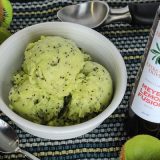Tips for healthy Living Featuring: Jalapeño Peppers
Hot Stuff!
By: Sharon Stewart, Registered Dietitian Nutritionist
When it comes to peppers, jalapeño peppers are one of the most versatile out there. Ranging from smooth green to bright red, they have become a staple in many cuisines around the world.
Most home cooks use jalapeños at least as much for heat as for flavor. The heat comes from capsaicin, found in most peppers. (Heat is measured on the Scoville scale: jalapeños come in at a relatively low 3,500-8,000. Bell peppers come in at zero, Scotch Bonnets range from 100,000-350,000, and Bhur Jolokia top out at around a million Scoville Heat Units.)
Capsaicin packs more than heat; it packs a punch –acting upon almost everything that isn’t good for us! Consider this: capsaicin is anti-inflammatory, anti-bacterial and anti-carcinogenic. Some research also suggests that capsaicin stimulates glucose absorption from the small intestine, making it anti-diabetic as well. But its best-known benefit is being a vasodilator that promotes healthy blood flow.
Capsaicin aside, jalapeños are an excellent source of vitamin A and vitamin C. Vitamin A supports skin and eye health by promoting cell turnover in the skin and protecting the surface of the eye. Vitamin C is an antioxidant that helps prevent damage from free radicals, as well as being a big contributor to collagen synthesis for resilient skin.
Picking Peppers
The riper a jalapeño gets, the redder it becomes, even showing white streaks that look something like stretch marks. That’s more than just appearance: the savvy home cook can use that information as a guide to flavor and heat. Although the verdict isn’t in as to whether you can predict heat from the color of a pepper, the presence of streaks and flecks can be an indicator of increased heat.
But the best way to control the heat is through how you use the seeds and membrane inside the pepper: that’s where the capsaicin is. So regardless of the color you choose, this is a part you can either keep or remove to influence the heat.
Jalapeños do not ripen once picked, so choose those without bruise spots, mold, and stems that are not shriveled.
Working with Jalapeños
Because capsaicin is an irritant, be sure to avoid contact with your eyes and lips while you handle it; some more capsaicin-sensitive cooks may choose to wear latex or vinyl gloves while preparing them.
The longer jalapeños cook, the less spicy they become. For this reason, you will see them used mostly in non-cooked dishes like salsas or as a garnish in Mexican and Tex-Mex American cuisines.
So add a little kick to your life by giving jalapeño peppers a try!











